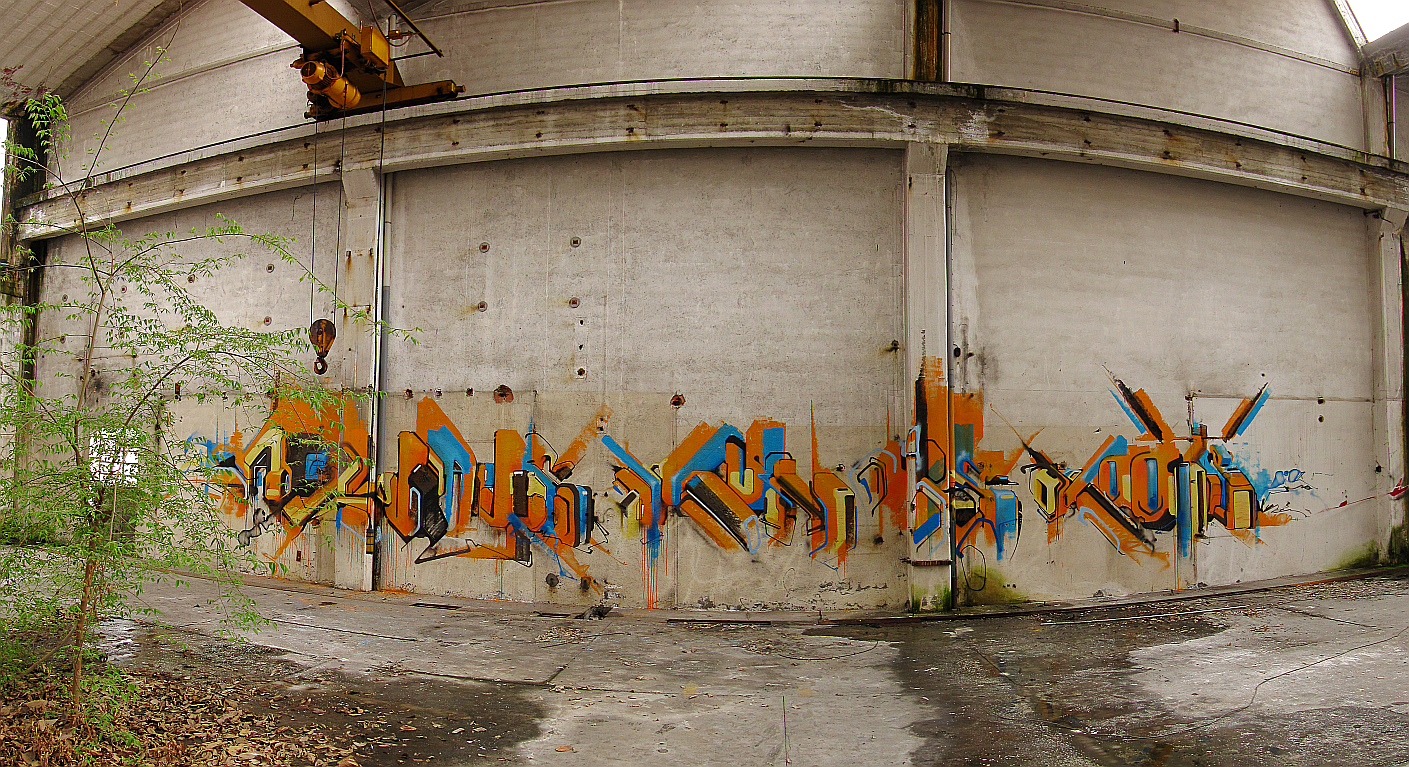
V3rbo // style as armor
On the Border of Binary and Spray Paint: A Digital Graffiti Revolution
In the twilight hours of European cities, when the commercial billboards dim and urban shadows lengthen, Mitja "V3rbo" Bombardieri transforms concrete canvases with a distinctive fusion of digital precision and analog rebellion.
“Creatures of Paint and Purpose”
Born in 1977, this Italian artist emerged from the traditional graffiti-writing movement only to push its boundaries into the digital age, armed with both spray cans and computer code.
Bombardieri's work, which earned him coveted membership in the prestigious PDB crew, speaks to a generation caught between two worlds: the gritty reality of city streets and the pixelated promises of early video games. His letters—if one can still call them that—evolve like digital organisms, encased in what he terms "external skeletons of biomechanical insects." These creatures of paint and purpose wage a daily battle for survival in the urban ecosystem, much like their creator's struggle to legitimize street art in an increasingly digitized world.
What sets V3rbo apart is his audacious leap from conventional graffiti into the realm of electronic avant-garde. As a co-developer of FLxER, a video performance software, he orchestrates what he calls "Video Raids"—nocturnal interventions where projected light temporarily rewrites the urban landscape. These digital apparitions, dancing across building facades in the dead of night, represent a fascinating evolution in street art: temporary, luminous, and yet no less subversive than their spray-painted predecessors.
Perhaps most intriguing is V3rbo's recent work with typographic plates, a choice that seems both ironic and inevitable. These industrial relics of mass communication become palimpsests under his spray can, their pre-existing patterns peeking through new layers of paint like ghostly reminders of advertising's omnipresence. "The matrix," as he calls it, becomes both medium and message, a commentary on the commercialization of public space that he simultaneously critiques and employs.
In Bombardieri's hands, graffiti becomes what he terms a "mass literacy project," though one suspects Marshall McLuhan would appreciate the medium as much as the message. His "freestyles"—swift, instinctual pieces that might take "the whole night or just one minute"—capture moments of artistic spontaneity within the rigid framework of urban advertising infrastructure. Like the bees he likens writers to, V3rbo pollinates the city with new aesthetic possibilities, breeding hybrid forms that thrive in the concrete jungle of contemporary culture.










